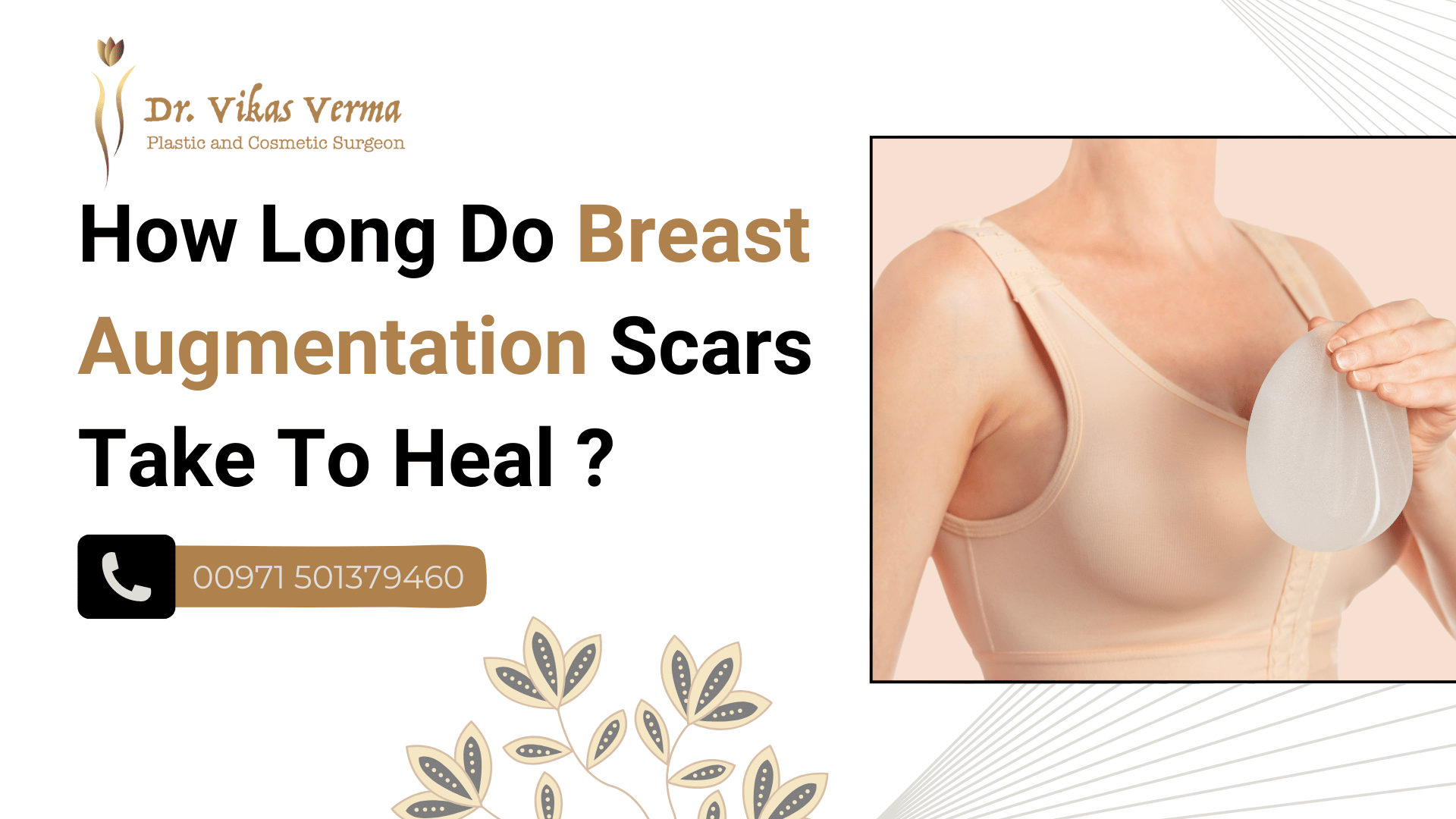Introduction
Breast augmentation surgery is a transformative procedure that can enhance a person’s confidence and self-esteem. However, like any surgical procedure, it involves incisions and, consequently, scars. Understanding the healing process of these scars is crucial for patients considering or undergoing breast augmentation surgery in Dubai.
In this comprehensive guide, we delve into the intricate details of how long breast augmentation scars take to heal, drawing insights from the expertise of Plastic Surgeon like Dr. Vikas Kumar Verma, a renowned plastic surgeon based in Dubai.
Understanding Breast Augmentation Scars
Breast augmentation surgery typically involves incisions made in inconspicuous areas to minimize visible scarring. Common incision locations include:
- Inframammary Incision: This incision is made in the natural fold under the breast.
- Periareolar Incision: The incision is made around the edge of the areola, where the dark skin meets the lighter skin.
- Transaxillary Incision: This involves making an incision in the underarm area.
- Transumbilical Incision: Also known as TUBA, this technique involves making an incision in the belly button area.
The choice of incision location depends on various factors, including the patient’s anatomy, the type of implants, and the surgeon’s preference.
Factors Affecting Scar Healing
Several factors influence the healing process of breast augmentation scars:
Individual Healing Capacity: Each person’s body heals at its own pace, influenced by factors such as genetics, age, and overall health.
Surgical Technique: The skill and precision of the surgeon play a significant role in minimizing scar formation and promoting optimal healing.
Incision Location: The location of the incision affects scar visibility and the duration of the healing process. Incisions made in areas with minimal tension tend to heal faster and produce less noticeable scars.
Postoperative Care: Proper wound care, including keeping the incision site clean and dry, following the surgeon’s instructions, and attending follow-up appointments, is crucial for optimal healing.
Implant Placement: Whether the implants are placed above or below the muscle can influence scar healing. Submuscular placement may result in a longer healing time due to increased tissue trauma.
Complications: In some cases, complications such as infection or implant rupture can prolong the healing process and affect scar formation.
Timeline of Scar Healing
While the exact timeline for scar healing varies from person to person, a general timeline can provide insights into what to expect during the recovery process:
Immediate Postoperative Period (Weeks 1-2):
- During the first few days following surgery, the incision sites may be swollen, bruised, and sensitive.
- Patients are typically advised to wear a surgical bra or compression garment to support the breasts and minimize swelling.
- It’s essential to avoid strenuous activities and follow the surgeon’s instructions for postoperative care.
Early Healing Phase (Weeks 3-6):
- By the third week, most of the swelling and bruising should start to subside.
- The incision sites may begin to itch or feel numb as the nerves regenerate.
- Patients may gradually resume light activities but should still avoid heavy lifting and strenuous exercise.
Intermediate Healing Phase (Weeks 6-12):
- By the sixth week, the majority of the swelling should have resolved, and the scars may appear pink or red.
- Scar maturation begins during this phase, with the scars gradually becoming less noticeable and fading over time.
- Patients can usually start incorporating more strenuous activities into their routine but should still be cautious and follow the surgeon’s recommendations.
Long-Term Healing Phase (Months to Years):
- Over the following months to years, the scars will continue to mature and fade.
- While they may never fully disappear, they should become significantly less visible and blend into the surrounding skin.
- Maintaining a healthy lifestyle, including proper nutrition and skincare, can support optimal scar healing and overall well-being.
Tips for Optimizing Scar Healing
To promote optimal scar healing following breast augmentation surgery, patients can follow these tips:
Follow Postoperative Instructions: Adhering to the surgeon’s postoperative instructions is crucial for minimizing complications and promoting optimal healing.
Protect the Incision Sites: Avoid exposing the incision sites to excessive sunlight, as UV radiation can cause scars to darken and become more noticeable.
Stay Hydrated and Eat a Balanced Diet: Proper hydration and nutrition support the body’s healing processes and promote healthy skin regeneration.
Use Scar Management Products: Silicone gel sheets, silicone gel, and other scar management products can help soften and flatten scars, reducing their visibility.
Attend Follow-Up Appointments: Regular follow-up appointments with the surgeon allow for monitoring of the healing process and early detection of any complications.
Conclusion
Breast augmentation surgery can be a life-changing procedure for many individuals, but it’s essential to understand the healing process of breast augmentation scars. By following proper postoperative care instructions, patients can optimize scar healing and achieve the best possible outcomes.
With the expertise of Dr. Vikas Kumar Verma, a skilled plastic surgeon in Dubai, patients can trust that their surgical journey will be guided with precision and care, leading to beautiful, natural-looking results and enhanced confidence.
